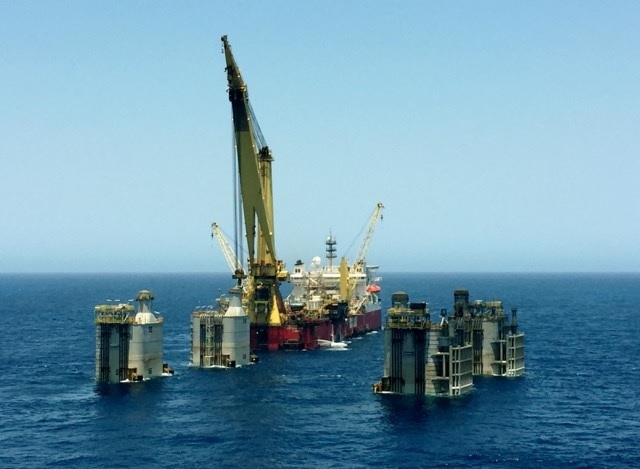
Australians love a good yarn, a chinwag, a chat. But it’s not sports or politics that’s making the ‘goss’ in the oil and gas boardrooms of Perth right now.
ConocoPhillips divesting its Darwin LNG stake is the latest rumour doing the rounds, and there’s plenty more potential M&A activity to keep the industry speculating over the next 12 months.
Several sizeable deals were inked in the region in 2018, with Woodside’s US$444 million acquisition of Scarborough and Santos’s US$2.2 billion acquisition of Quadrant Energy the pick of the bunch. This year in comparison has been relatively quiet, but word on the street is that something larger might be brewing. We think an M&A shake-up could be on the horizon.
We’ve identified a potential US$32 billion worth of assets that could change hands in the next few years. Many of these deals are long in the planning and reflect wider trends in the Australian and global upstream sectors. We’ve bucketed our pick of the deals into three key themes:
- Rationalisation and high grading of assets within international oil companies’ (IOC) portfolios
- Corporate takeover targets
- Australian LNG infrastructure
Portfolio rationalisation.
The Majors and big IOCs continue to actively manage their global portfolios, trimming mature, non-core assets to focus and allocate resources to core growth projects. In Australia our spotlight falls on two IOCs, Eni and ConocoPhillips.
Eni’s Australian portfolio is reliant on the depleting Bayu-Undan field that feeds the Darwin LNG plant. The undeveloped gas assets, Evans Shoal and Blacktip, offer limited potential when Bayu-Undan ceases in 2022, and the Italian player may prefer to focus on more attractive opportunities in the Middle East and Mozambique.
ConocoPhillips’s portfolio high-grading has already started with the sale of its 30% stake in Sunrise to the East Timor government for US$350 million back in October 2018. It’s unlikely this will be the last asset in the region to be sold. More radically, we’ve believed for some time that ConocoPhillips could sell out of Australia entirely, and recent market rumours suggest we’re not the only ones.
A sale of Darwin LNG, and the capital and emissions intensive Barossa-Caldita supply project would free up capital for buybacks and re-investment in US tight oil – the focus of ConocoPhillips’s strategy in recent years.
If a Darwin divestment were to materialise, APLNG would be ConocoPhillips’ only producing asset left in Australia. This asset is a cash cow in its portfolio and is unlikely to be sold anytime soon. That said, it is a high sustaining capex, relatively low return-yielding coal-seam gas asset. The funds could be diverted to higher payback US onshore projects instead.
Corporate takeover targets.
Consolidation is on the cards among smaller players, particularly those with exposure to rising east coast gas prices. Cooper Energy (COE), Senex Energy (SXY), Comet Ridge (COI) and Galilee Energy (GLL) fit this bill.
However, not all companies are valued equally, with the market favouring those with discovered gas in the ground and ready to go, over unconventional resource holders. The likes of Senex Energy, Comet Ridge and Galilee Energy are being valued around four times less than Cooper Energy on an enterprise value to resource base metric. Acquiring or bolstering a position on the Australian east coast market could be cheaper via the unconventional route, but it is not without risk.
But the biggest potential corporate takeover in Australia might not even involve Australian assets. Oil Search’s PNG expansion plans have run into political problems in recent months, weighing on the company’s share price. But the firm’s PNG portfolio still offers an attractive LNG growth position, and coupled with the oil-weighted Alaska assets, Oil Search might yet be an attractive proposition for a larger player with serious LNG ambitions.
Australian LNG infrastructure.
We see the need for a new LNG asset ownership model if Australia is to optimise its undeveloped gas resources and remain globally competitive.
The North West Shelf (NWS) is the primary project in question. It is running short of gas supply to maintain LNG output and will require third-party gas in the near-future. The list of potential backfill resources in the Carnarvon basin is long, but the current development pipeline is short, as a lack of alignment between upstream partners and plant owners stymies new investment.
But as the 17.6-million tonnes per annum NWS LNG plant starts receiving third-party gas, and generating tolling and tariff revenue, a change in ownership of the downstream facilities could breathe new life into several stalled upstream projects. Infrastructure-investors or pension funds would be happy with regular tolling and tariff revenues, and less concerned with where supply comes from, provided maximum throughput is maintained.
However, there are still many barriers to overcome. The primary sticking point is convincing all the NWS joint venture partners to relinquish control of this key infrastructure asset. Alignment on third-party access agreements and security of future gas supply into the facility are some key hurdles.
These hurdles are not insurmountable. And we see this ownership structure as a longer-term play. In the interim, we think equity alignment between third-party upstream supply and the liquefaction facility through M&A, a more likely outcome.
Recommended for you
